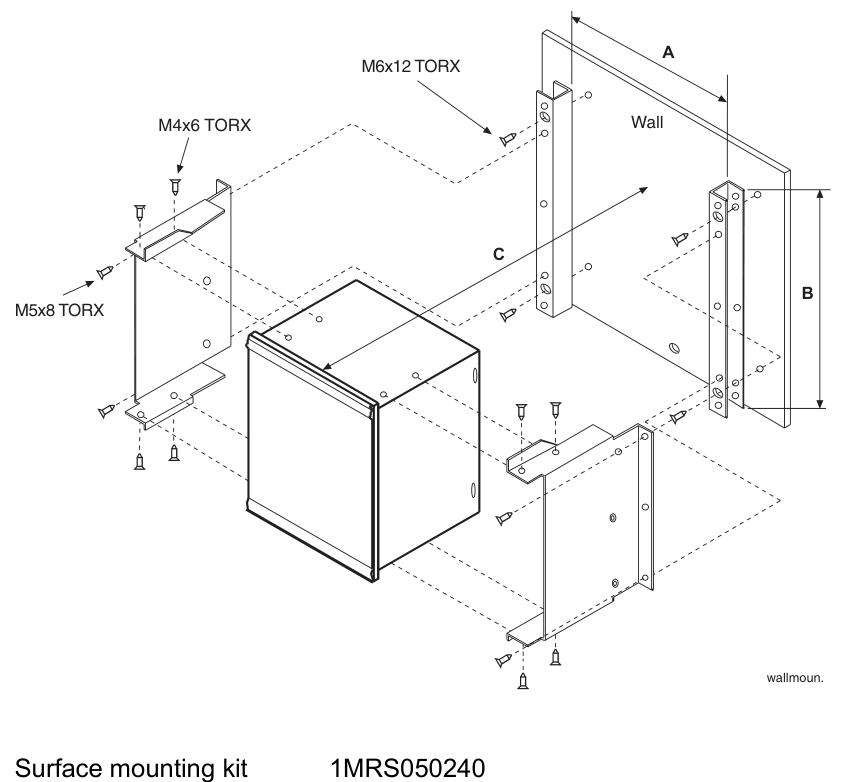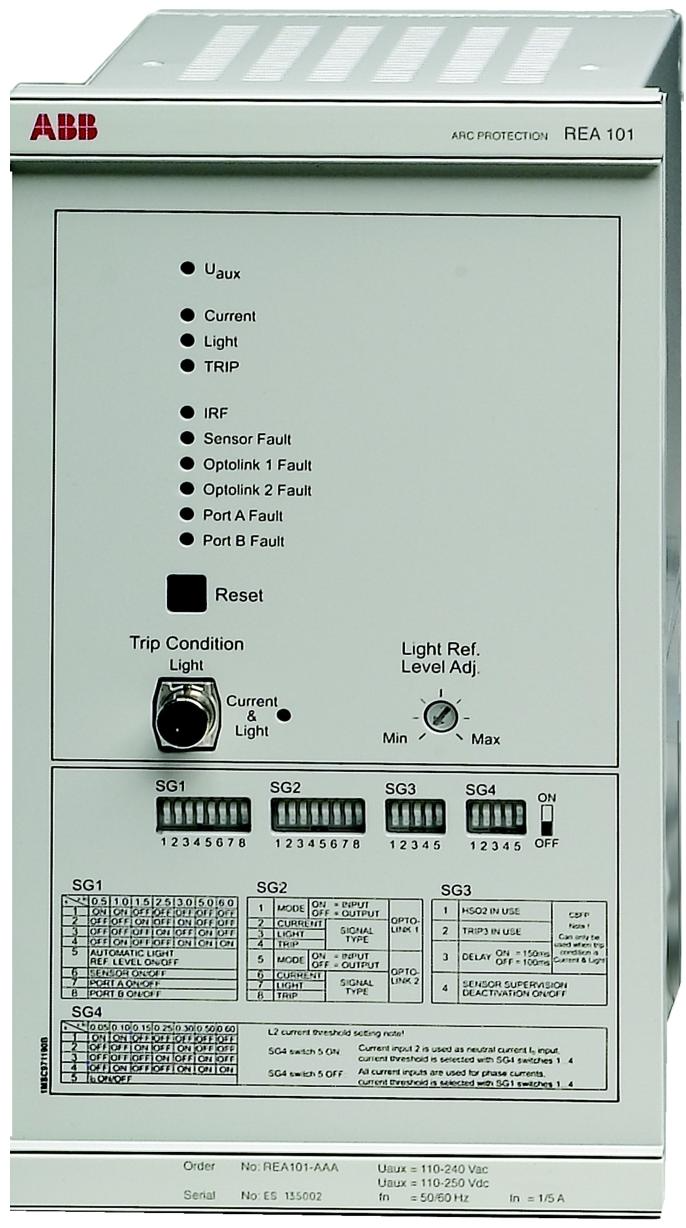ABB REA 101 arc protection relay
Working principle
REA 101 monitors fault current through overcurrent detection unit, and detects the light signal generated by arc light through arc light detection unit. When both overcurrent signal and optical signal are received simultaneously (and there is no working voltage fault signal), the tripping output is triggered, causing the circuit breaker to operate and cut off the fault circuit. Through Optolink communication, information exchange between central units can be achieved, and combined with extension units, the protection range can be expanded and selective tripping can be achieved. The self-monitoring unit monitors the equipment status in real-time to ensure the reliable operation of the system.

Key advantages
Quick response: The total action time is short (HSO1 and HSO2<2.5ms, TRIP3<15ms), which can quickly cut off faults, reduce equipment damage and personnel injury risks.
High reliability: equipped with comprehensive self-monitoring function, timely detection and indication of faults; Adapt to complex industrial environments through multiple rigorous insulation and electromagnetic compatibility tests.
Strong flexibility: Supports multiple sensors (fiber optic sensors, lens sensors), can operate independently or work in conjunction with other central units and expansion units to adapt to different protection needs.
Easy to expand: By connecting expansion units through ports, the protection range can be flexibly expanded according to the system size, improving system selectivity.
Accurate protection: dual detection of overcurrent and arc light to avoid misoperation and ensure reliable operation in the event of actual arc light failure.
Precautions
Safe operation: comply with national and local electrical safety regulations, only qualified electricians are allowed to carry out electrical installations; The equipment framework needs to be reliably grounded; The sensor fiber should be handled carefully to avoid sharp bends (minimum bending radius 50mm), and should not be placed on the ground during installation to prevent stepping on it; When changing settings and configurations, the auxiliary power supply needs to be disconnected.
Installation settings: The sensor fiber end needs to be protected to avoid unnecessary triggering; When connecting expansion units, pay attention to the port switch settings, and the last expansion unit needs to be connected to a terminal resistor; Settings and configuration changes need to be made with the auxiliary power disconnected.
Maintenance testing: Regularly check the current measurement function, optical signal transmission, etc; Follow the prescribed steps when testing the arc protection system to ensure its normal operation.
Environmental requirements: Use within the specified range of temperature, humidity, and other environmental parameters to avoid extreme environmental conditions affecting equipment performance.
Similar model supplement
REA103: Expansion unit that can add an arc light sensor circuit to expand the protection area and assist REA101 in achieving more comprehensive arc light monitoring.
REA105: Expansion unit with trip output, capable of selective tripping. When the arc fault is located behind a specific circuit breaker, it accurately controls the corresponding circuit breaker action, enhancing system selectivity.
REA107: Expansion unit with 8 lens sensor inputs, suitable for arc light monitoring of specific compartments, improving monitoring specificity.
Application scenarios
Mainly used for arc protection of low or medium voltage air insulated metal enclosed switchgear, such as power distribution systems in substations and industrial plants. A circuit breaker compartment that can protect busbars, outgoing feeders, cable terminals, etc. By cooperating with expansion units, it achieves comprehensive, fast, and reliable arc fault protection for complex distribution systems, suitable for electrical safety protection in fields such as power and industry.

- EMERSON
- Honeywell
- CTI
- Rolls-Royce
- General Electric
- Woodward
- Yaskawa
- xYCOM
- Motorola
- Siemens
- Rockwell
- ABB
- B&R
- HIMA
- Construction site
- electricity
- Automobile market
- PLC
- DCS
- Motor drivers
- VSD
- Implications
- cement
- CO2
- CEM
- methane
- Artificial intelligence
- Titanic
- Solar energy
- Hydrogen fuel cell
- Hydrogen and fuel cells
- Hydrogen and oxygen fuel cells
- tyre
- Chemical fiber
- dynamo
- corpuscle
- Pulp and paper
- printing
- fossil
- FANUC
- Food and beverage
- Life science
- Sewage treatment
- Personal care
- electricity
- boats
- infrastructure
- Automobile industry
- metallurgy
- Nuclear power generation
- Geothermal power generation
- Water and wastewater
- Infrastructure construction
- Mine hazard
- steel
- papermaking
- Natural gas industry
- Infrastructure construction
- Power and energy
- Rubber and plastic
- Renewable energy
- pharmacy
- mining
- Plastic industry
- Schneider
- Kongsberg
- NI
- Wind energy
- International petroleum
- International new energy network
- gas
- WATLOW
- ProSoft
- SEW
- wind
- ADVANCED
- Reliance
- YOKOGAWA
- TRICONEX
- FOXBORO
- METSO
- MAN
- Advantest
- ADVANCED
- ALSTOM
- Control Wave
- AB
- AMAT
- STUDER
- KONGSBERG
- MOTOROLA
- DANAHER MOTION
- Bently
- Galil
- EATON
- MOLEX
- Triconex
- DEIF
- B&W
- ZYGO
- Aerotech
- DANFOSS
- KOLLMORGEN
- Beijer
- Endress+Hauser
- MOOG
- KB
- Moxa
- Rexroth
- YAMAHA
- Johnson
- Westinghouse
- WAGO
- TOSHIBA
- TEKTRONIX


Email:wang@kongjiangauto.com























































































































